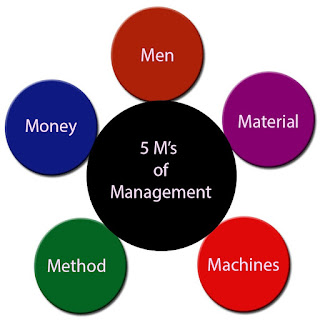Thursday, May 28, 2015
Thursday, May 14, 2015
Japanese 5 "S" Discipline: The key to Keeping our workplace neat everyday
Do you want your table/office to look like this even at the end of a busy day? The Japanese has some advice how to do it.
The Japanese are known for their discipline and they have recommended the FIVE "S" for "good housekeeping techniques" to maintain a clean workplace.
Japanese 5 “S”
1. seiri (sort)
2. seiton (stabilize, systematic
Arrangement, set)
3. seiso (shine)
4. seiketsu (standardize)
5. shitsuke (sustain)
At the end of the day, you leave your workplace clean and be ready to start the work fresh for the next day.
Monday, May 4, 2015
Are you preparing teacher-made instructional materials? Here's a guide
Preliminary Considerations in Designing Teaching Materials
(by Howard, J, et.
al., Christchurch College of Education, New Zealand[1])
Preliminary
Considerations
1. Contextualization
a. The teaching
material is aimed at a specific group of learners or a particular cultural or
educational context.
b. Resources –
Teachers should consider the use of the best resources available in their
teaching context.
2. 2. Individual Needs
a. Modern teaching
methodology increasingly emphasizes the importance of identifying and teaching
to the individual needs of learners.
b. Teacher-designed
materials should be responsive to the heterogeneity inherent in the classroom.
c. In addition,
teacher-prepared materials provide the opportunity to select texts and
activities at exactly the right level for particular learners, to ensure
appropriate challenge and levels of success.
3. 3. Personalization –
The teaching material should tap into the interests and take account of the
learning styles of students.
4. 4. Timeliness –
Teachers should design their own materials to respond to local and
international events with up-to-date, relevant and high-interest topics and
tasks.
5. 5. Organization
a. The teaching
materials should be organized around an identifiable principle and follow a
discernible pattern throughout while this can be rather dull and boring.
However, without some overall organizing principle, materials may be piecemeal
and can result in poorly focused activities lacking clear direction.
b. Physical
organisation and storage of materials – Without a clearly thought-through and
well-organised system, teacher-produced materials may be difficult to locate
for ongoing use, or may end up damaged or with parts missing.
6. 6. Quality – The
materials should not contain errors, be properly constructed, clear in layout and
print and durable.
7. 7. Time – The
teachers must passionately believe in the materials.
8. Pilot Testing (Trial Period) - The materials are pilot-tested before they are used by all the teachers and the learners.
[1] Christchurch
College was a college of education founded in 1873 located in Christchurch,
New Zealand until it was amalgamated with the University of Canterbury and
formed a new Faculty of Education with the university’s School of Education.
Subscribe to:
Comments (Atom)
A look at the mother-tongue-based multi-lingual education (MTB-MLE) curriculum in the Philippines
The new Philippine President recently mentioned the need to revert to English as a medium of instruction (EMI), which essentially necessitat...

-
Do you want your table/office to look like this even at the end of a busy day? The Japanese has some advice how to do it. The Japanese are...
-
5 Ms of Management 1. Men 2. Material 3. Machines 4. Method 5. Money from: http://www.a4lsd.in/sml.aspx
-
The new Philippine President recently mentioned the need to revert to English as a medium of instruction (EMI), which essentially necessitat...






